|
The “new norm” for socializing and engaging with friends and family for the past seven months has mainly been conducted online. This is also true for meeting with winemakers, participating in virtual wine tastings and experiencing life abroad while sitting in my living room. Recently, I took part in a virtual wine tasting and food pairing hosted by Italian winemaker Sandro Bottega, co-owner of Bottega SpA headquartered in Bibano, Treviso in the Veneto region of northern Italy. The company produces Prosecco DOC and grappa here. In addition, they have another winery in Conegliano for the production of Prosecco DOCG. Bottega also manages wineries in Valpolicella and Montalcino. Sandro is third-generation of this family-owned company founded almost 40 years ago by his father, Aldo Bottega, a Master Distiller. What began with the family’s forefathers in the 17th century through the 1920s working and cultivating the vines as tenant farmers, landowners and wine traders, eventually evolved over time with Aldo Bottega following his passion for making grappa. In 1977, Aldo established his own distillery, Distilleria Bottega. After Aldo’s passing in 1983, his son Sandro became the company director and together with his siblings Barbara and Stefano, the company has grown to include the production of sparkling and still wines and liqueurs. In 1992, Bottega released its first sparkling wine. The company manages several different brands, among which are Bottega sparkling wines, Alexander Grappa and Accademia. Bottega’s motto is “Fatto A Mano”, which means ‘handmade’. Their mission is to work and achieve the highest levels of quality, design and sustainability. Our wine tasting for the afternoon included sparkling wines, a chocolate liqueur and gin. The food was provided by igourmet.com All of the bottles are beautifully designed and made of hand-blown Venetian glass in Bottega’s glass factory. I asked Sandro what his motivation was for using Venetian glass for his products. Sandro said, “It is important to make a completely original product from the wine or grappa to the packaging in an expression of our territory and of our culture. Another important reason I use this glass is that I like it! In my company, everything I do is not only because it is a business, but it has to be first and foremost because I like it.” Academia Prosecco Rainbow Collection is a brand that celebrates the art of Venetian glassmaking and the city’s festive carnival atmosphere. Each bottle of this collection contains Prosecco DOC. There are eight colors to choose from (black and white bottles not shown in photo) and can be combined to “create a rainbow of emotions”. Mix and match to celebrate specific holidays or events. They make great gifts for the upcoming holidays! Prosecco Spumante DOC Brut 100% Glera grapes are hand-harvested from manually maintained and sustainable vineyards in Treviso Plains. The wine is produced using the Martinotti (Charmat, tank) method. The color of this sparkling wine is pale lemon with lovely aromas of floral, apples and citrus. It is fresh and lively with flavors of apple, pear, pink grapefruit and a touch of floral. It has a creamy mouthfeel, fine bubbles and apples lingering on the finish. This wine was paired with a variety of cheeses, cold cuts, olives and pesto crackers. Alcohol: 11% SRP: $17.99 Il Vino dell’Amore Petalo Moscato Spumante Dolce 100% Moscato grapes are hand-harvested from vineyards in the Euganean Hills of Veneto. These hills contain volcanic soil, rich in potassium and alkaline soil that contributes good acidity, minerality and higher sugar content. The wine is produced using the Martinotti (Charmat, tank) method. The color is golden with a consistent and fine perlage. Classic aromas of apple, peach and rose mingle with fruity notes. On the palate, this refreshing sparkling wine offers honeysuckle, apricot, white stone fruit and a touch of minerality, balanced nicely with good acidity and sugar. It was paired with aged cheese, Gouda, pumpkin butter and water crackers. Simply divine! Alcohol: 6.5% SRP: $15.99 Gianduia Chocolate Cream Liqueur Gianduia chocolate was created in Piedmont in 1806 and has a unique bouquet of cocoa and nuts. Gianduia Bottega is a unique liqueur made with Bottega’s premium Alexander grappa from the Veneto region and Gianduia Chocolate. Grappa is mixed with milk cream (sourced from Alpine cows that only eat grass) that is homogenized and filtered to remove the fats. It is then mixed with sugar, chocolate and hazelnut paste. Heavenly aromas of cocoa and nuts segue onto the palate for a creamy and most inviting experience. Rich hazelnut flavors and cocoa contribute to this decadent liqueur and is best served cold. Sandro likes to drink this neat. However, it can be poured over ice, served over ice cream, with fruit, in a cocktail, or in your coffee. This liqueur was paired with a pumpkin spice truffle bar, dark chocolate bar and Biscotti. Alcohol: 17% SRP: $24.99 Bacur Gin This dry gin is certainly eye-catching with its unique metallic copper bottle. Italy is one of the largest producers of juniper, especially around Tuscany. And considering it is the main ingredient in gin, it was a simple leap for Bottega to produce gin. The other ingredients are pure grain, water from the Italian Alps, sage leaves from the Veneto countryside and Sicilian lemons.
This gin has aromas of sage, juniper and citrus notes that segue onto the palate mingling with a hint of perfume and lemon zest. It is smooth and delicate. I consider this a sipping gin, but I’m sure that it will spice things up when added to cocktails. Alcohol: 40% SRP: $39.00 If you would like to learn more about the grapes, regions, territories and production methods mentioned in this story, please click on the topic of interest to the right of this page. Until next time… Cheers! Penina To leave a comment or if you have an inquiry, please contact me at [email protected] While visiting Asti in the Piedmont region of Italy a few months ago, I spent an afternoon at a walk-around tasting of the ASTI DOCG wines. One of the tables that I stopped by was Fontanafredda where I met the delightful Chiara Destefanis, Communications Director for the estate, who poured a variety of delicious sparkling wines for me to try. Little did I know that just a short six weeks later I would be sitting across the table from Chiara at a winemaker’s luncheon in New York! Only this time the emphasis was on Fontanafredda Barolo wines. Giorgio Lavagna, Fontanafredda’s lead winemaker was there as well to guide us through an impressive tasting of current releases and a few library treats dating back over 20 years. Fontanafredda estate is located in the Langhe region of Piedmont, Italy. It all began with a love story. In 1858 King Vittorio Emanuele II bought the Fontanafredda estate as a gift for his beloved and favorite mistress, Rosa Vercellana aka “La bela Rosin”. They had two children together, who eventually inherited the estate, Maria Vittoria and Emanuele Alberto, Count of Mirafiori and Fontanafredda. In 1866, the king bought the first vineyard of Barolo and by 1870 winemaking began in the cellars of Fontanafredda using the indigenous grapes Dolcetto, Barbera and Nebbiolo. The king’s son Count Emanuele Alberto of Mirafiori turned the estate into a full commercial winery with over 741 acres of wine vineyards. Fontanafredda released their first Nebbiolo labeled as Barolo with the 1878 vintage, the same year that the king passed away. The count is credited with making Barolo legendary and turning Fontanafredda into a village, complete with a church and school. After the count’s passing in 1894, his second son, Gastone took over. Unfortunately, Phylloxera, several wars and the economic depression took a toll on the wine business. A bank bought the estate and cellar, and the brand was sold to the Gancia family in 1931. It wasn’t until 2009 that Fontanafredda was sold to Piedmont native, Oscar Farinetti and Luca Baffigo Filangieri. The 250-acre estate is in Serralunga d’Alba, which is a cru site of Barolo, and it is the largest contiguous wine estate in the Langhe. With the new ownership in 2009, sustainability became a special focus and today Fontanafredda is the largest certified organic company in Piedmont, beginning with the 2018 harvest. The climate is typically continental in the Langhe with rain usually arriving in the spring and fall. Rainfall amounts vary and can be a large determinant in the diversity of the harvest from one year to the next. Soil here is mainly calcareous, but composition can change every 10 meters or so with more sand or higher content of loam and clay. Our tasting began with 2012 Alta Langa DOCG Contessa Rosa Rosé Sparkling wine with the addition of Barolo 1967! This wine is named after the king’s mistress, Countess Rosa Vercellana. It is an aromatic and fresh wine with berries, a hint of herbs, fine bubbles and balanced acidity. Giorgio said, “The Barolo is added to the wine to give smoothness”. Barolo DOCG Del Comune Di Serralunga D’Alba 2015 This is the first single-village Barolo ever produced since 1988. Giorgio said, “the soil in Serralunga has a strong influence, helping to produce grapes with strong tannins and high acidity, making the wine more age-worthy. 2015 was a very good vintage.” This wine is velvety even with the pronounced tannins. It has great structure and balance and the fruit is lush with cherry and spice. Barolo DOCG Fontanafredda 2013 This wine is considered an “old-style” vintage with aging in oak casks for two years and then 12 months in the bottle. (This is minimum aging allowed for the DOCG) It has lots of spice, red fruit, tart cherry and silky tannins. It is quite expressive and has a lengthy finish. Barolo DOCG Vigna La Rosa 2011 and 1996 No one really knows if this 20-acre vineyard is named after the king’s love for Countess Rosa or a tribute to the wild roses that grow on the top of the hills. I’d like to think that it is named after the countess. After all, it is one of the most prestigious vineyards on the estate. It is a perfect scenario for growing grapes with a landscape in the form of an amphitheater and rows of vines facing south and southwest, capturing the heat and helping the grapes to ripen. The soil also contributes with its rich mixture of sand, limestone and blue marl of Serralunga. All of this results in exquisite Barolos with floral aromas, fine tannins and balanced acidity. The 2011 vintage is complex with a rich palate of dark berries, spice, soft tannins and a long finish. Sergio called the 1996 vintage, “old-style Barolo that is dark and brooding”. Although the aromas were leaning toward stewed fruit such as plum and cherry, along with sweet spice and forest, the palate was surprisingly rich with traces of dark cherry, plum and herbs. The finish was long and impressive. Barolo 2010 Riserva and 2000 Riserva Barolo Riserva is only made in exceptional years and comes exclusively from Fontanafredda’s estate vineyards within the communes of Serralunga d’Alba and Barolo. To be considered a Riserva, the wine must age for five years, three years in the barrel and two years in the bottle before its release. Giorgio said, “A minimum aging of three years in barrel is required for Riserva wine, but sometimes even five years is not enough. The wines need to express themselves, and only time can do that.” Barolo Riserva 2010 has enticing aromas of red berries, cherry and spice. The palate is layered with dark berries, plum, sour cherry, spice and silky tannins. Riserva 2000 aromas are softer with very ripe (almost overripe fruit) and spice. The palate shows softer fruit and less spice than the 2010 vintage. There are hints of sour cherry and anise with a silky mouthfeel and long finish. As we sipped and ate lunch, Giorgio reminisced about Barolo winemaking in the 1970s. “I didn’t produce wine in the 70s, I just tasted it. Everything was by chance and depended on the moon phase. No studies were being done. In the past, farmers and winemakers went on their own paths, each with their own role. There was no communication”. Thankfully, all of that has changed and communication is key between grower and winemaker. They say it takes a village to raise a child. It also takes teamwork and the right climate and soil to produce these expressive and elegant wines!
Until next time… Cheers! Penina To leave a comment or if you have an inquiry, please contact me at [email protected] 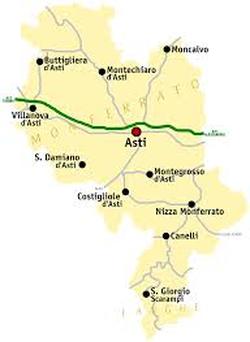 Nestled in the Province of Asti, in the Italian region of Piedmont, lies the town of Canelli which is home to over 10,000 inhabitants. Ancient villages, castles and bountiful vineyards perched on gentle slopes surround Canelli. The town is steeped in history and was declared a UNESCO World Heritage Site on June 22nd, 2014. It is also considered the birthplace of the Italian sparkling wine, Asti. 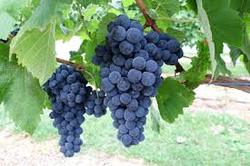 The municipality boasts many grape varieties such as Moscato, Barbera, Dolcetto, Cortese and Chardonnay. The Barbera grape is the third most planted red grape variety in Italy and the most famous appellation is the DOCG Barbera d’Asti. Almost half of all grape vine plantings in Piedmont are Barbera. The grape is a deep color and is known for producing low tannins and high levels of acid. 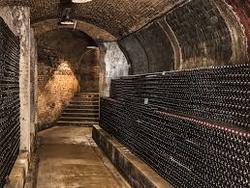 Photo courtesy of Coppo Winery Photo courtesy of Coppo Winery Coppo Winery is located in Canelli and was founded by Piero Coppo in 1892. It has remained in the family for over 120 years and is now run by Piero’s four grandsons, Piero, Gianni, Paolo and Roberto. Cousins Max and Luigi who are fourth generation, have recently joined the team. Piero began building the winery in the late 18th century, creating small underground cellars to store wine. The cellars were expanded between the 1800s and 1900s and are know today as the Underground Cathedrals. Due to their historical value, these underground cellars have been recognized as a UNESCO World Heritage site. What began in the 1800s with Coppo making the first Italian spumante with secondary bottle fermentation and giving Canelli a place in wine history, led to Coppo’s production of red wines in the 20th century. Among their most notable red is Barbera d’Asti. In 1984, the Coppo family produced the first vintage of Barbera d’Asti Pomorosso, “making it the symbol of the winery and paradigm of a new history of Barbera”. Quote taken from Coppo website. I recently tasted three Barbera d’Asti releases from the Coppo Winery, courtesy of the importer, Folio Fine Wine Partners. 2014 Coppo L’Avvocata Barbera d’Asti DOCG 2012 Coppo Camp du Rouss Barbera d’Asti DOCG 2010 Coppo Pomorosso Barbera d’Asti DOCG 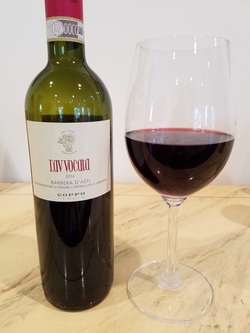 The 2014 L’Avvocata is Coppo’s entry level Barbera d’Asti. It is made with 100% Barbera grapes and aged in stainless steel tanks. The color of the wine is dark cherry bordering on ruby. The aromas of cherry, plum and a bit of earth spill over into a subtle fusion of fresh berries, raspberries, spice, pepper and a hint of sour cherry on the palate. It is a medium to long finish. The wine is clean and nicely balanced with soft tannins. This is a great wine to pair with pasta, piquant red sauce, meaty fish and bold cheeses. Alcohol 13% Price: $15 (SRP) 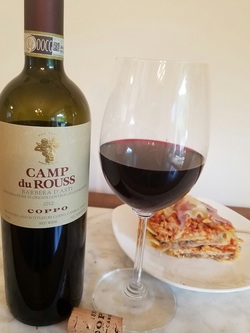 The 2012 Camp du Rouss Barbera d’Asti is made with 100% Barbera grapes and aged in French oak barrels. The color of the wine is deep ruby with cherry, red raspberry, tobacco and spice on the nose. On the palate this full-bodied wine leads with sour cherry seguing into hints of plum, pepper and oak with a long and crisp finish. This is another well balanced wine with soft tannins, making it a perfect wine to drink alone or pair with a hearty lasagna! Alcohol: 14.5% Price: $21.00 (SRP) 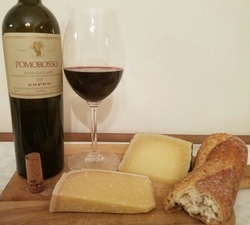 The 2010 Pomorosso is Coppo’s signature Barbera d’Asti. Made with 100% Barbera grapes, it is aged for 14 months in French oak barrels. The color of the wine is dark ruby with purple hues. It has intense aromas of spice and cherry with hints of blueberry and oak that are layered and continue onto the palate. A blast of pepper and hints of tobacco linger on a long finish. Again, as with the previous wines reviewed, the Pomorosso is full-bodied, crisp and clean, with mild tannins. This wine will complement any hearty meal such as stews, meat entrees or one of my famous soups! However, I found it also paired well with the Manchego and Piave del Sapore cheeses! Alcohol: 14.5% Price: $50.00 (SRP Barbera d’Asti wines pair beautifully with a wide range of food. So, if you’re looking for full-bodied Italian red wine with lots of character and low tannins, put a little swirl in your glass and try Barbera d’Asti!
To learn more about Coppo’s history, wines and integrated farming and biodynamic techniques, please visit their website. http://www.coppo.it/en/ Cheers! Penina |
Categories
All
|

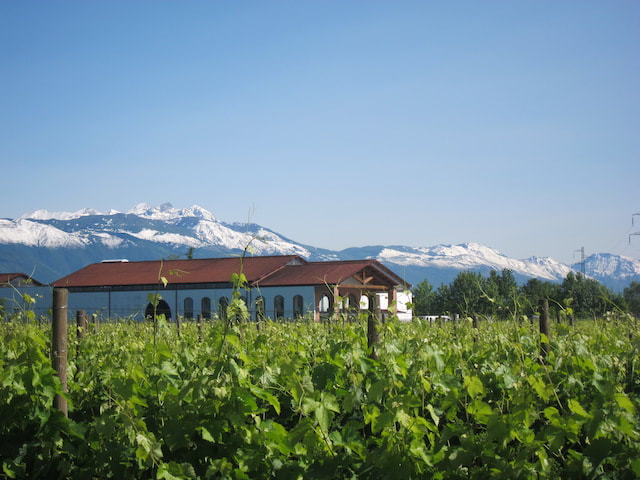
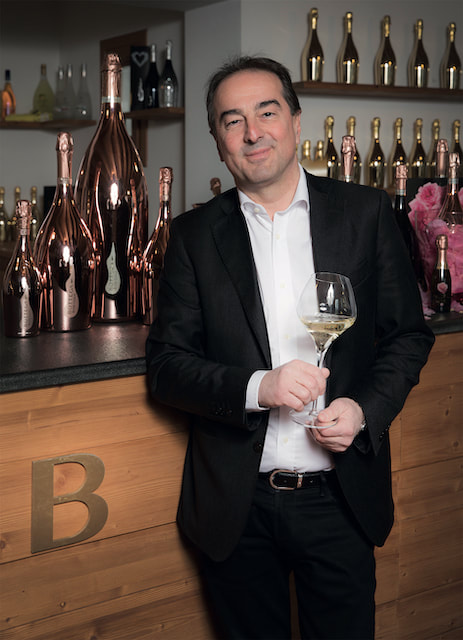
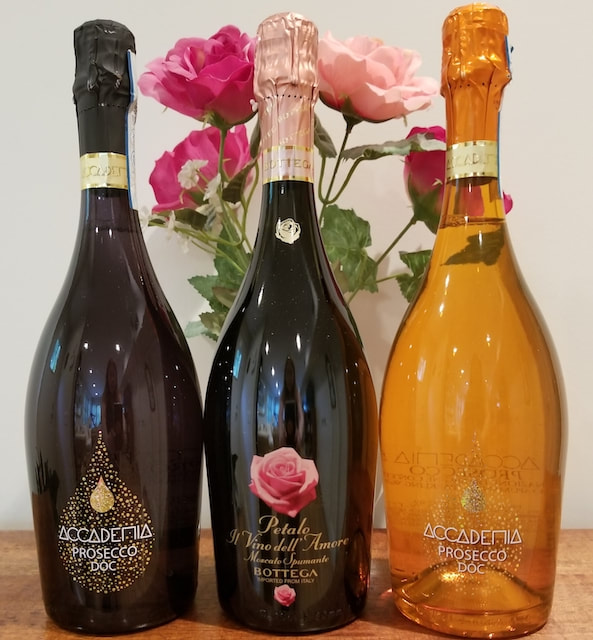
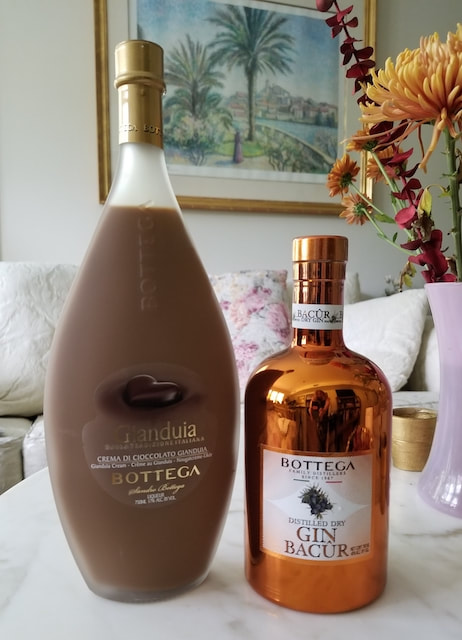
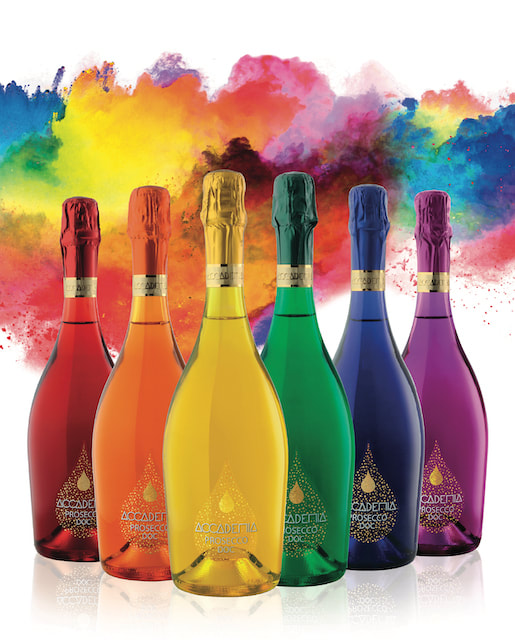
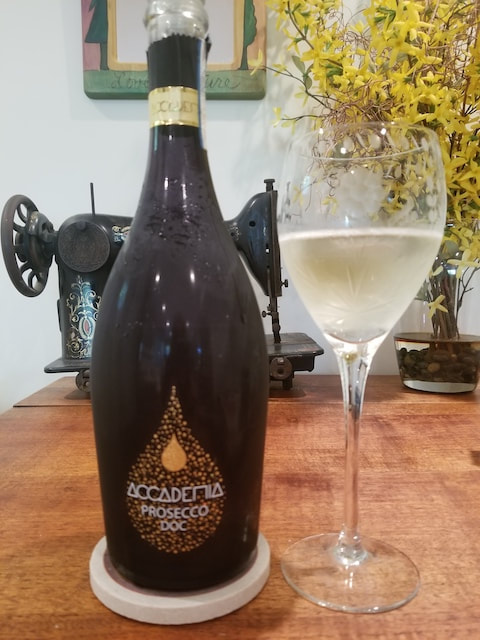
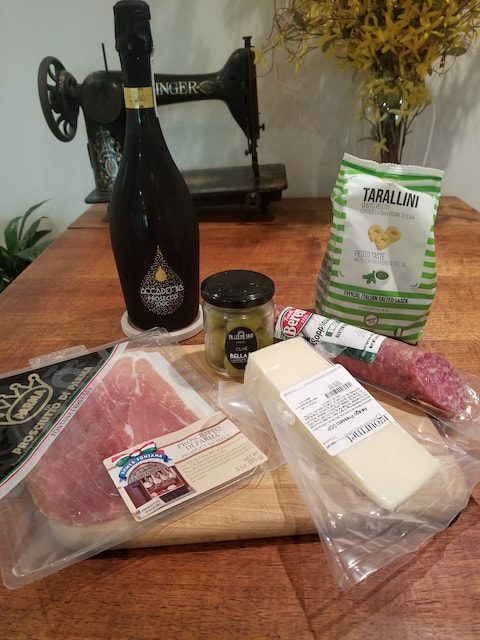
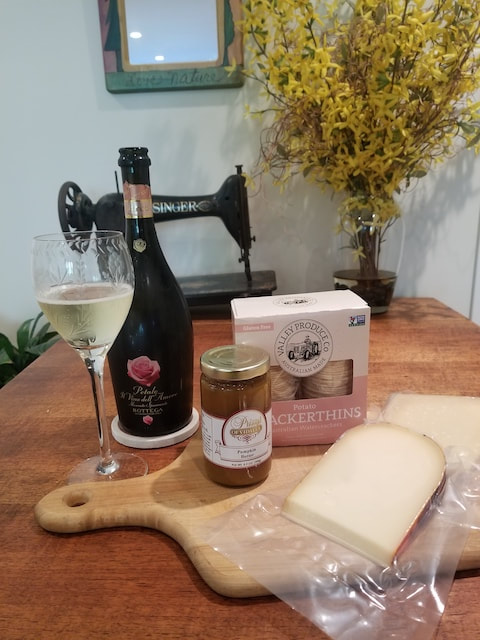
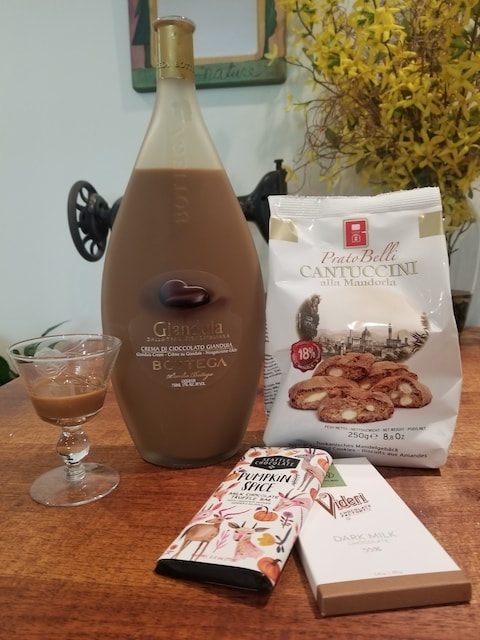
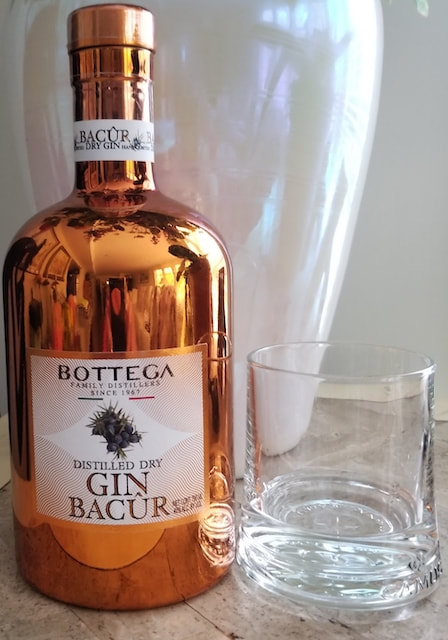
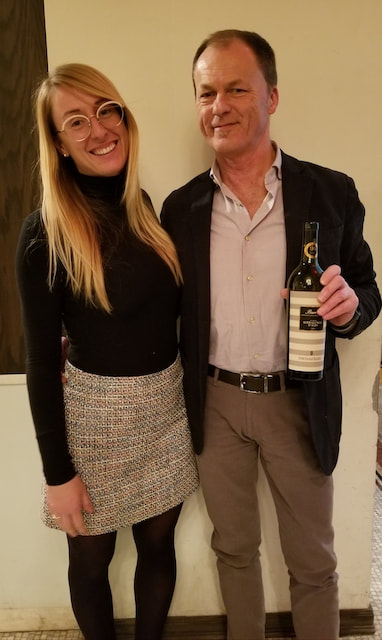
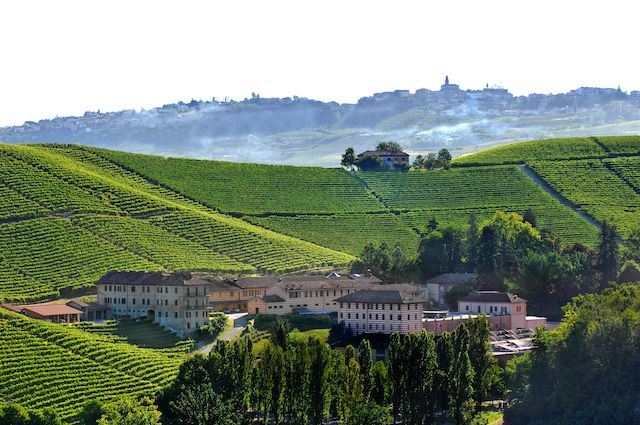
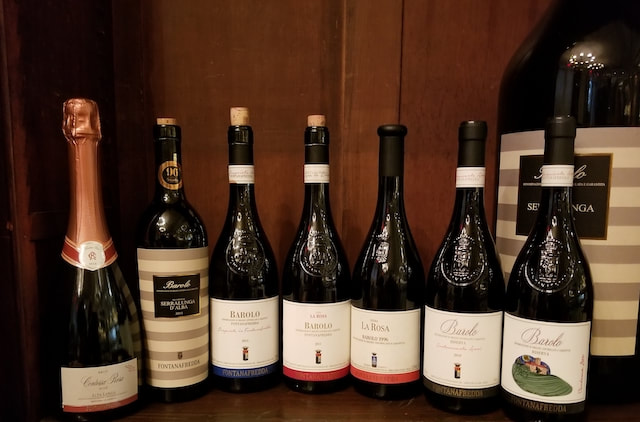
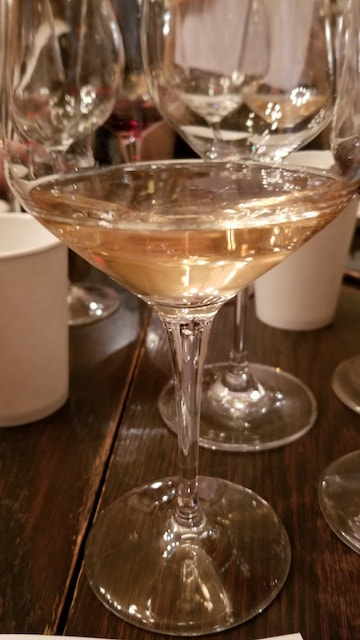
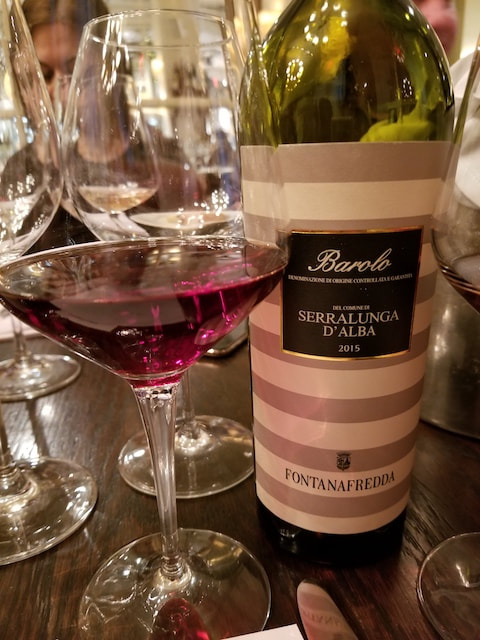
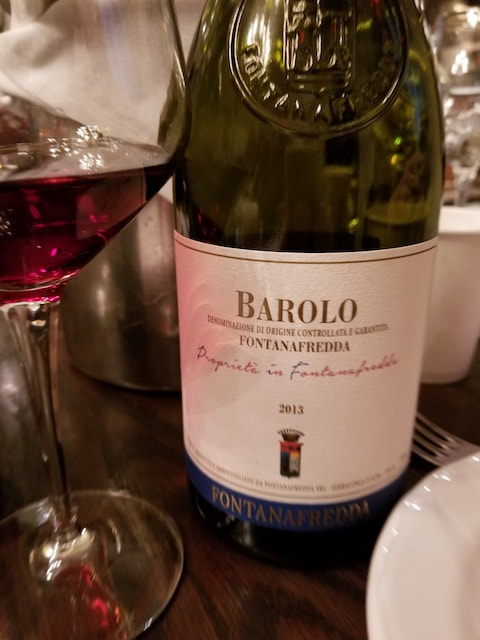
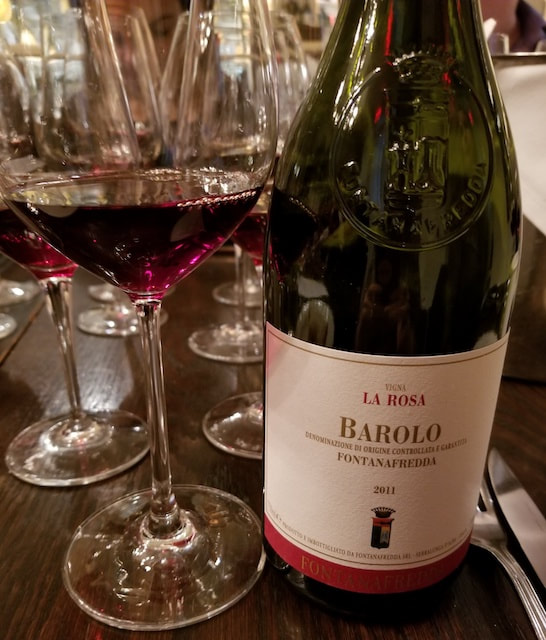
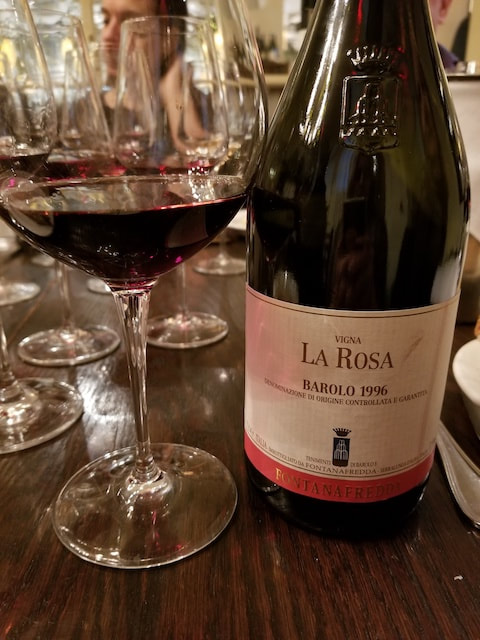
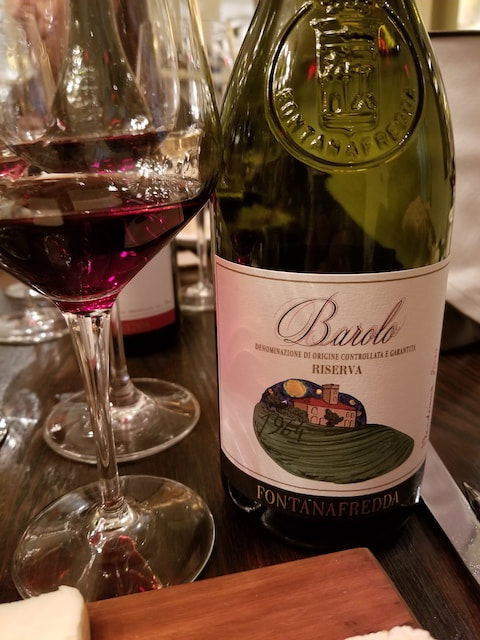
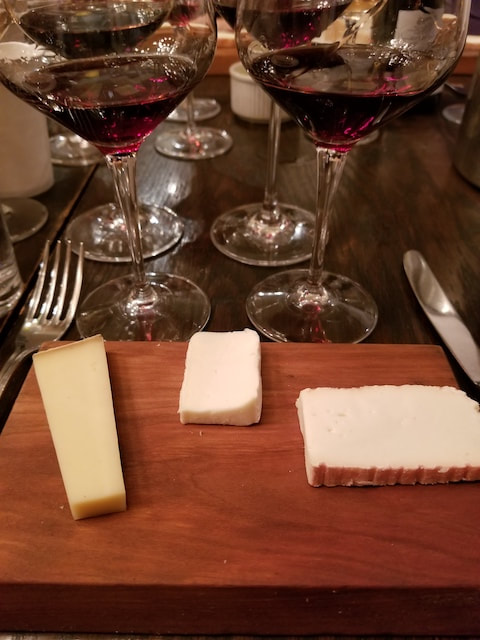
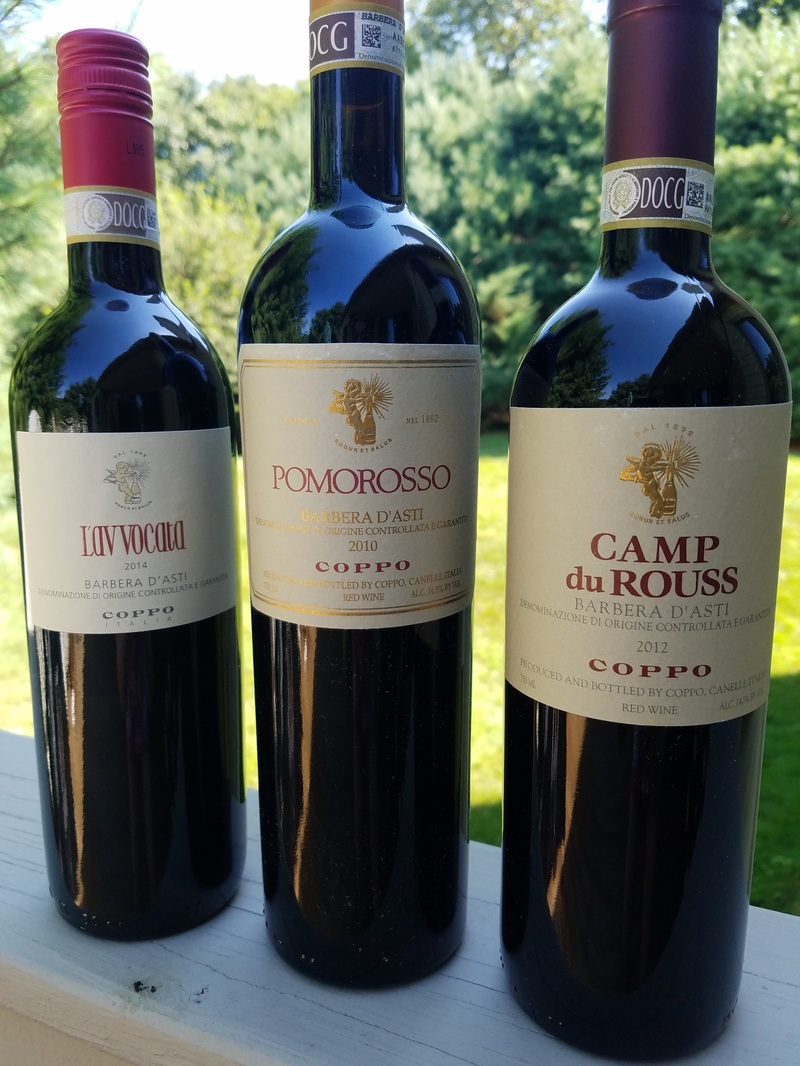
 RSS Feed
RSS Feed